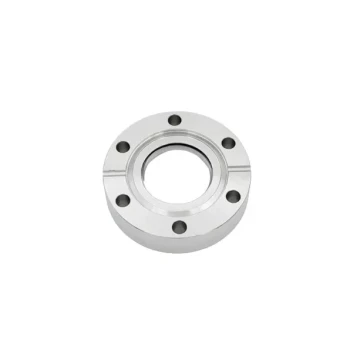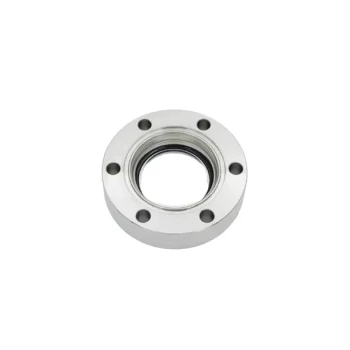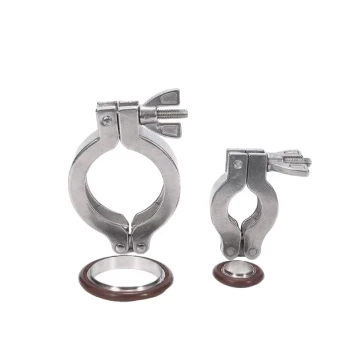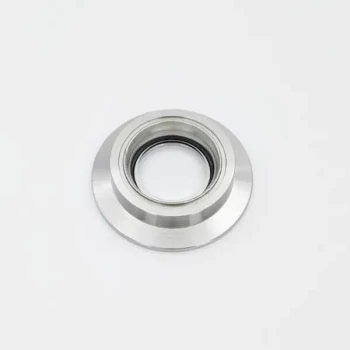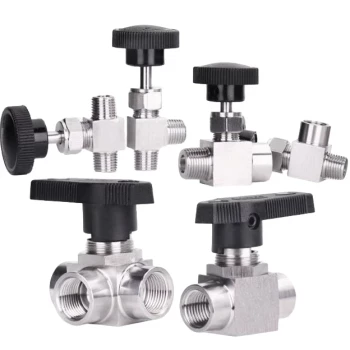Laboratory vacuum furnaces employ various cooling systems to achieve precise thermal control, essential for material processing. These systems include gas quenching (using inert gases like argon or nitrogen), oil quenching, water-cooled jackets, and forced air cooling. Advanced features like programmable controllers and high-pressure gas quenching optimize cooling rates for specific applications, such as hardening tool steels or annealing titanium. The choice of cooling method depends on the material's properties and desired outcomes, ensuring uniform hardness, refined grain structures, or stress relief.
Key Points Explained:
-
Gas Quenching Systems
- Inert Gases: Argon or nitrogen are pressurized (up to 2x atmospheric pressure) and circulated through the hot zone to absorb heat, which is then dissipated via heat exchangers. This method is ideal for achieving uniform hardness in tool steels.
- High-Pressure Gas Quenching: Custom furnaces may use CFD-optimized nozzles to enhance cooling uniformity, critical for aerospace alloys or 3D-printed components.
-
Oil Quenching
- Rapid immersion in oil baths refines grain structures in nickel-based superalloys, though it requires post-quench cleaning to remove residues.
-
Water-Cooled Jackets & Forced Air Cooling
- Jackets: Integrated water-cooled sections in furnace walls or retorts enable steady heat dissipation.
- Forced Air: Ambient air is injected around the retort or via extended retort designs for moderate cooling rates, suitable for stress-relief processes.
-
Programmable Cooling Protocols
- Advanced PID/PLC controllers automate cooling cycles (e.g., 51-segment programs), allowing precise dwell times and rate adjustments via touchscreen interfaces. Safety features like over-temperature protection ensure reliability.
-
Hybrid Configurations
- Graphite-Based: Uses carbon felt and graphite foil for efficient gas distribution.
- All-Metal: Molybdenum/stainless steel constructions prioritize ultra-clean environments, often paired with vacuum hot press machine compatibility for composite materials.
-
Specialized Applications
- Slow Cooling: Inert gas backfilling anneals titanium components to mitigate residual stresses.
- Tilt Mechanisms: Some furnaces integrate tilt-and-pour systems for controlled cooling of cast metals.
Each method balances speed, material compatibility, and post-processing needs, making cooling systems a pivotal factor in vacuum furnace selection.
Summary Table:
| Cooling System | Key Features | Best For |
|---|---|---|
| Gas Quenching | Uses inert gases (Ar/N₂), high-pressure options, uniform cooling | Tool steels, aerospace alloys, 3D-printed components |
| Oil Quenching | Rapid immersion, grain refinement, requires post-cleaning | Nickel-based superalloys |
| Water-Cooled Jackets | Steady heat dissipation via integrated cooling sections | General lab applications, moderate cooling needs |
| Forced Air Cooling | Ambient air injection, moderate rates | Stress-relief processes |
| Programmable Control | PID/PLC automation, 51-segment programs, safety features | Custom thermal profiles, precision-dependent materials |
| Hybrid Configurations | Graphite or all-metal designs, ultra-clean environments | Composite materials, vacuum hot pressing |
Upgrade your lab’s thermal processing capabilities with KINTEK’s advanced vacuum furnaces! Our precision-engineered cooling systems—including gas quenching, oil quenching, and programmable controls—deliver unmatched uniformity and reliability for aerospace alloys, tool steels, and specialized materials. Leveraging in-house R&D and deep customization, we tailor solutions like Vacuum Heat Treat Furnaces to your exact needs. Contact us today to discuss your project requirements!
Products You Might Be Looking For:
High-performance vacuum observation windows for real-time monitoring
Energy-efficient vacuum furnaces with ceramic fiber insulation
Precision vacuum valves for leak-proof system control
Durable vacuum flange plates for system integrity
High-temperature heating elements for consistent thermal output










